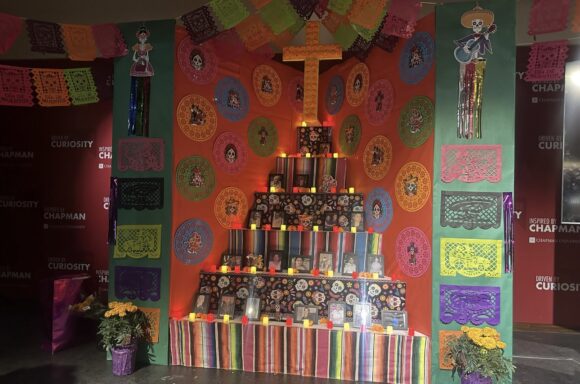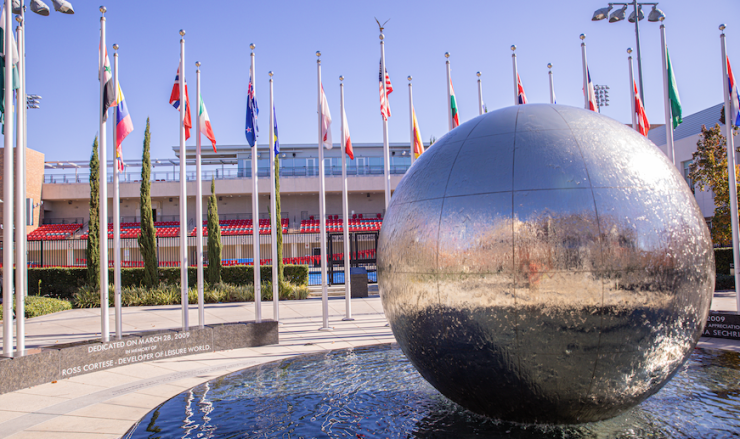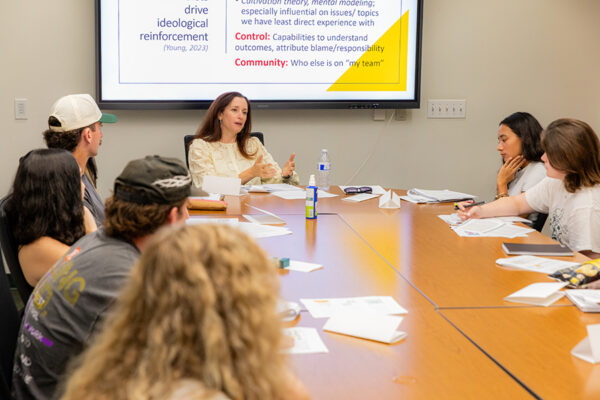The fall and early winter months are scattered with a number of celebrations focused on the importance of memory and community. In portions of the northern hemisphere, many experience this as a time when trees shed their leaves, vegetation becomes dormant, and the vibrant greens of summer give way to coppers, russets and umbers. In this portion of the globe, daylight shortens as the hours of starlight expand. As hours of darkness elongate, we turn to the power of memory to inform our hope that light is yet on the horizon.
In November, commemorations such as Dia de los Muertos and Trans Day of Remembrance are celebrated. We commemorate both as a campus community. Some of us also hallow these days with personal or familial ceremonies. Celebrations such as these call to mind people from our communities who have gone before us. Traditions surrounding such commemorations may be steeped in age-old ritual or marked by avant-garde and creative expression.
The celebration of Dia de los Muertos has its roots in the indigenous cultures and communities of Mexico. This is a time of communing with loved ones who have passed from life to death. The construction of ofrendas, filled with food, lights, pictures and significant objects is one of the beautiful traditions surrounding this special day. A more recent commemoration, Trans Day of Remembrance was established in 1999 to call to mind trans folx who have been lost due to transphobia. Ceremonies are less ritualized and may include the calling out of names or lighting of candles.

In such celebrations, as we grieve and rejoice with others around us, we feel the social nature of our individuality. Each of us begins to sense, in the words of Desmond Tutu, that: “My humanity is caught up in yours.” However we may go about calling to mind our ancestors, we are engaging in the power of collective memory to connect us with each other across time, space and difference.
December, with its many celebrations, is also a time when we call to mind the past as we celebrate the present. In this season of lit candles, festive songs, traditional food and retold stories, we choose not to let the past fall away. Rather we look to situate ourselves within the stream of time’s ongoing lineage. When memory is paired with hope, and resists a deterministic understanding of history, our celebrations of heroes from the past inspire us to become heroes of the present. In learning about histories of communities beyond my own, I am enlightened about the rich heritage of the other and can share mine with them. Such celebrations often remind us of our common humanity. At the same time it may reveal new and surprising differences we may never have perceived.
With a growing Panther family as diverse as ours, it is essential that we honor the histories of the many communities from which we come. Some histories are easily accessible in curricula and media as they have become the dominant narratives of our society. Other histories exist, however, which get less publicity. Often these are the histories of minoritized communities. Celebrations and recognitions which center stories of these communities honor the value that their cultural heritage brings to our collective good. Whether the community being celebrated and the past being commemorated is ours or another’s we all find value in engaging in commemorations which teach us about ourselves and each other. We ponder: Who has gone before us? What stories inform our present reality? Where do we belong? And most importantly, we ask: What guidance can we gather from the past to move us forward in the future?
Why do we look to the past as a way of advancing our inclusive future? Because the past can tell us much about who we are as a community of today. These commemorative months evoke a question that Dr. Suzanne SooHoo, professor emerita, often asked her students at the start of every course: “Who do you bring with you into this place with us?” Facing the light and darkness of the past we can imagine what it means to become a better present community today.




